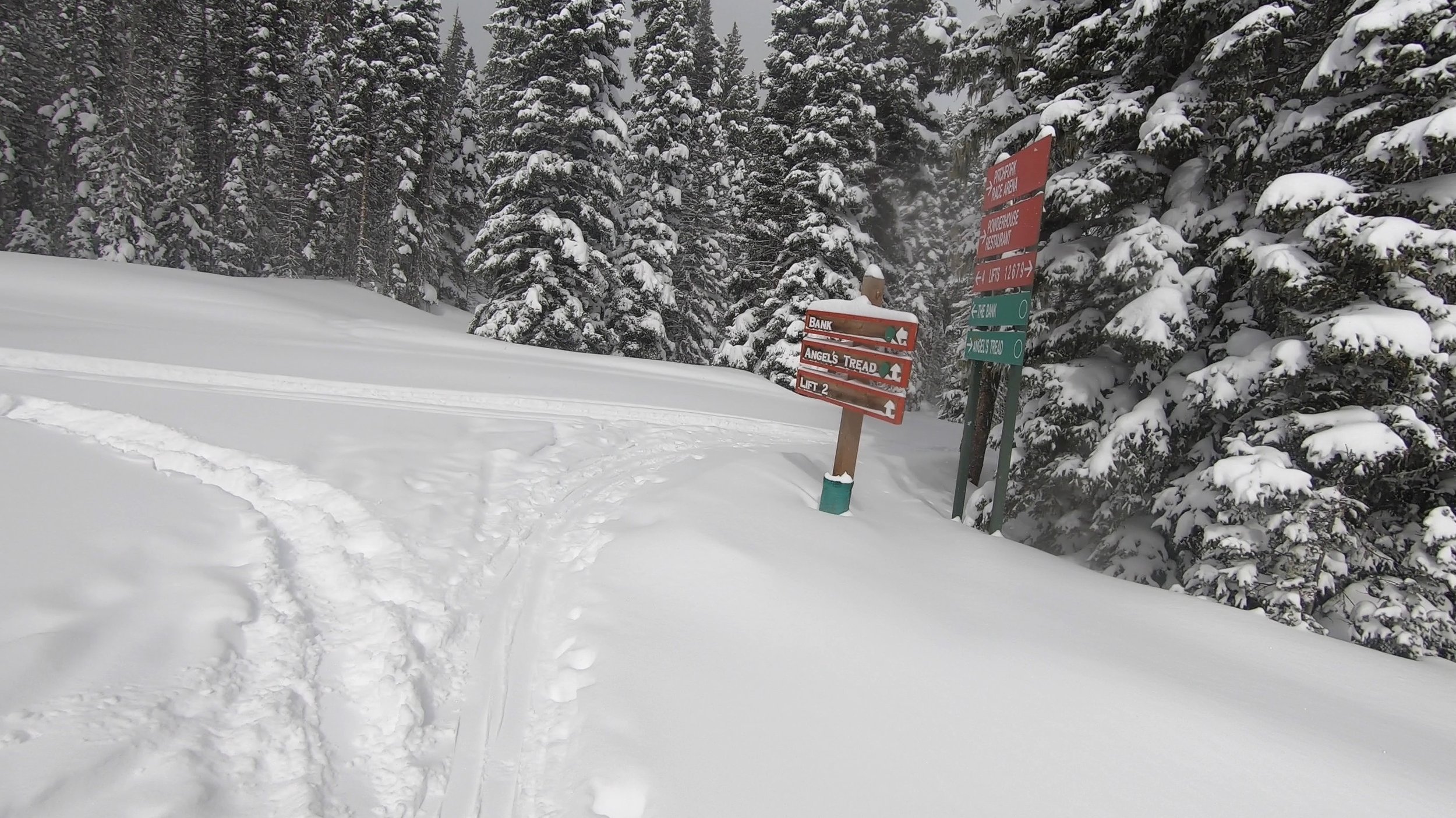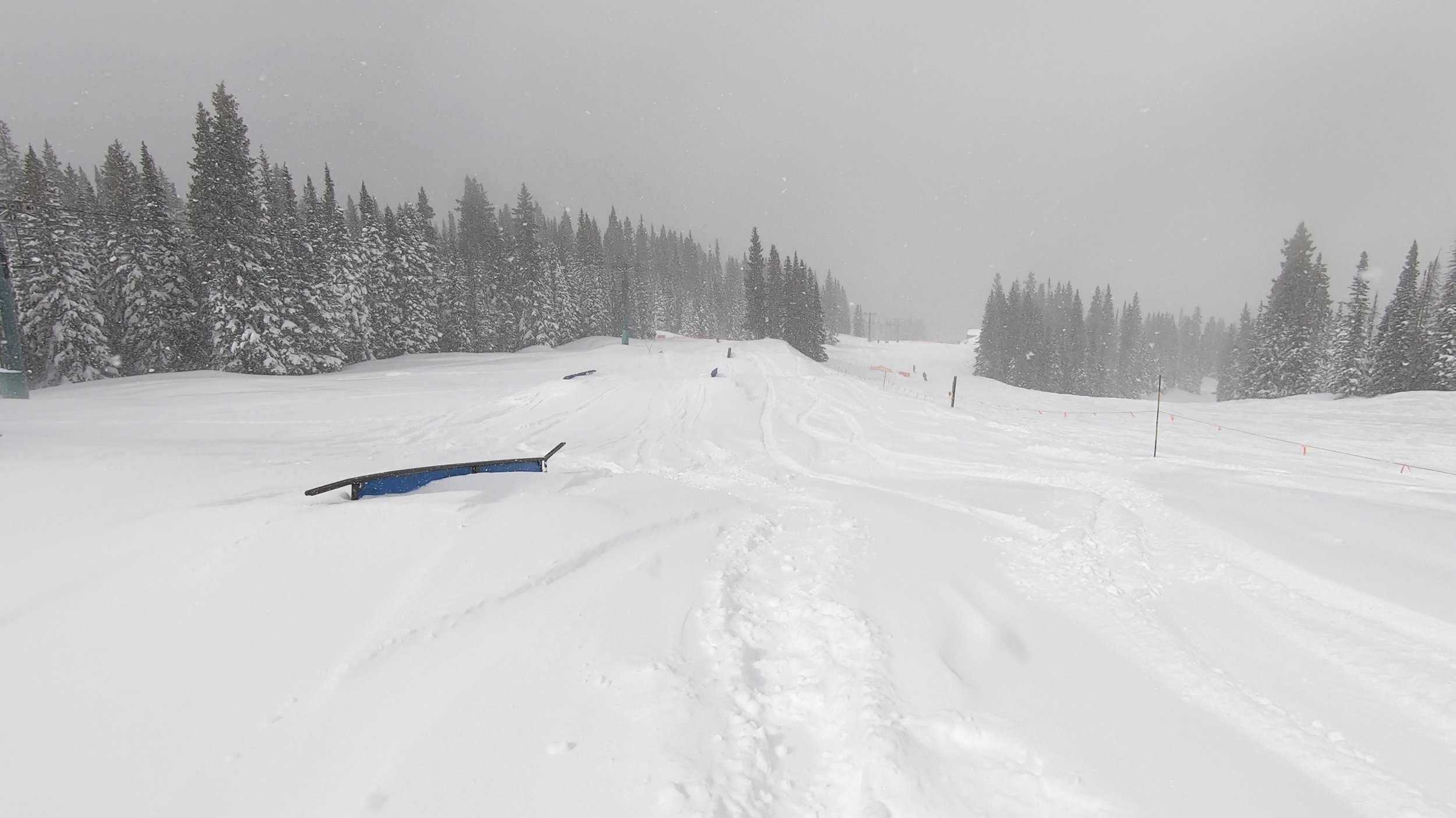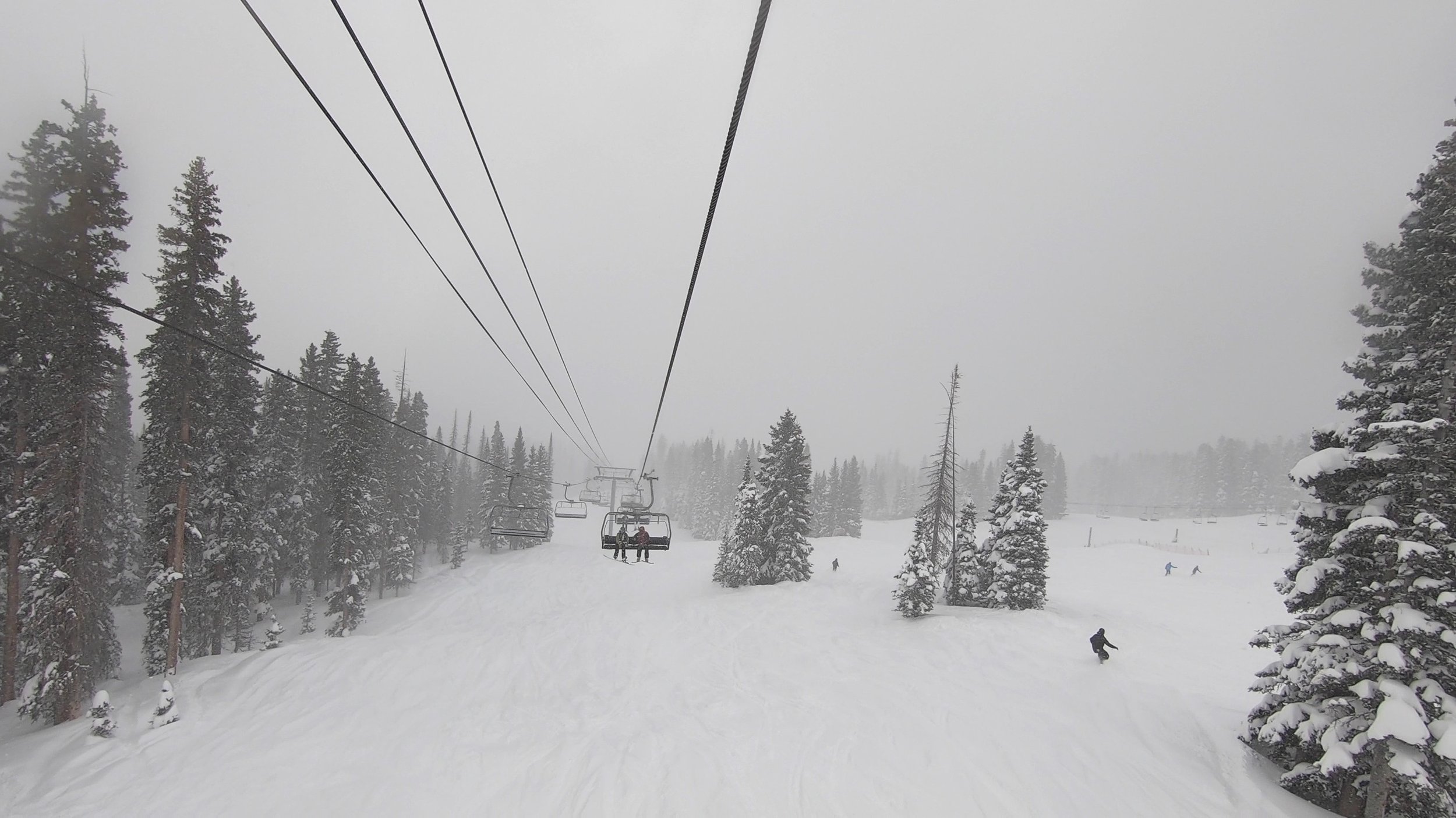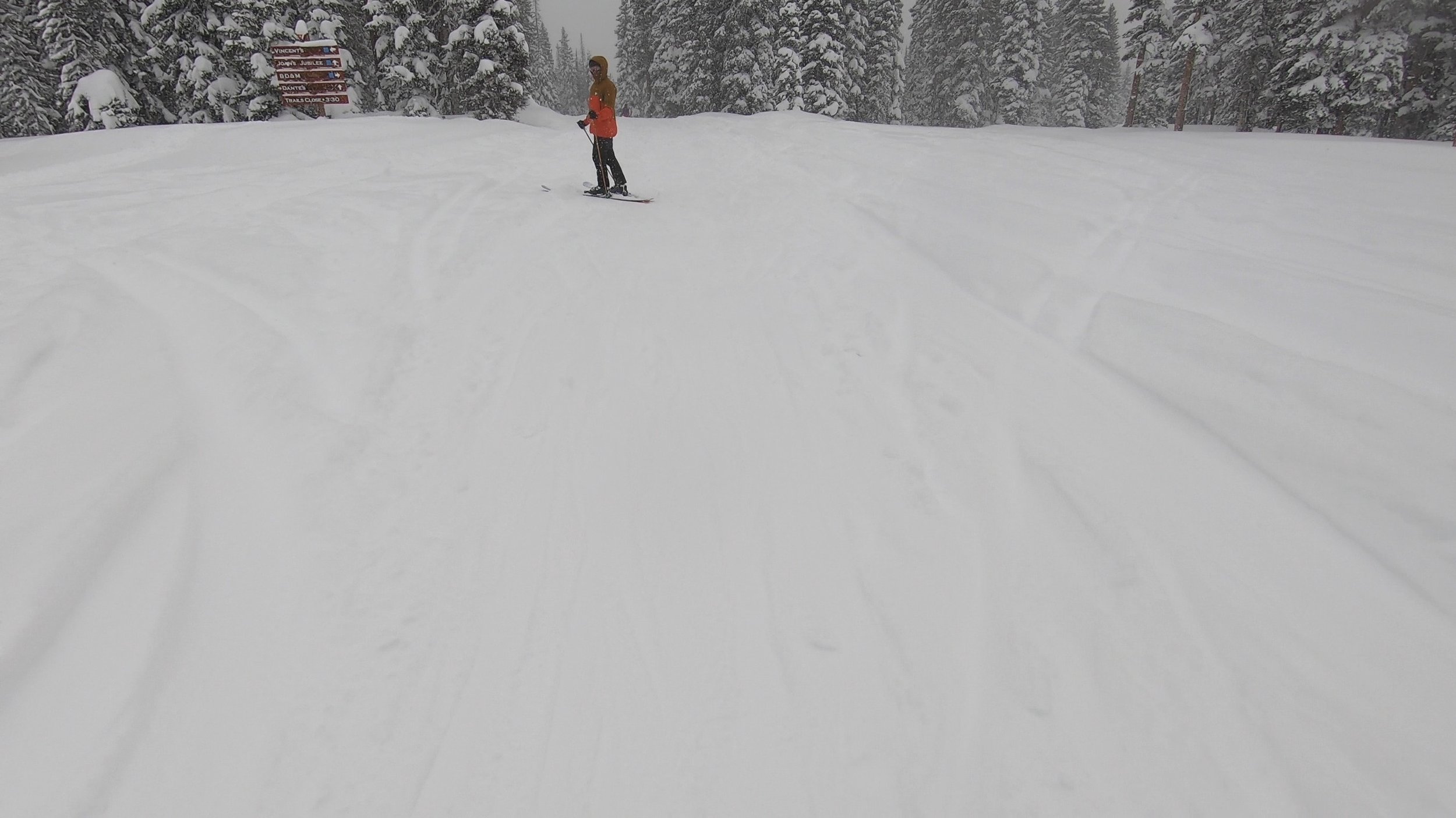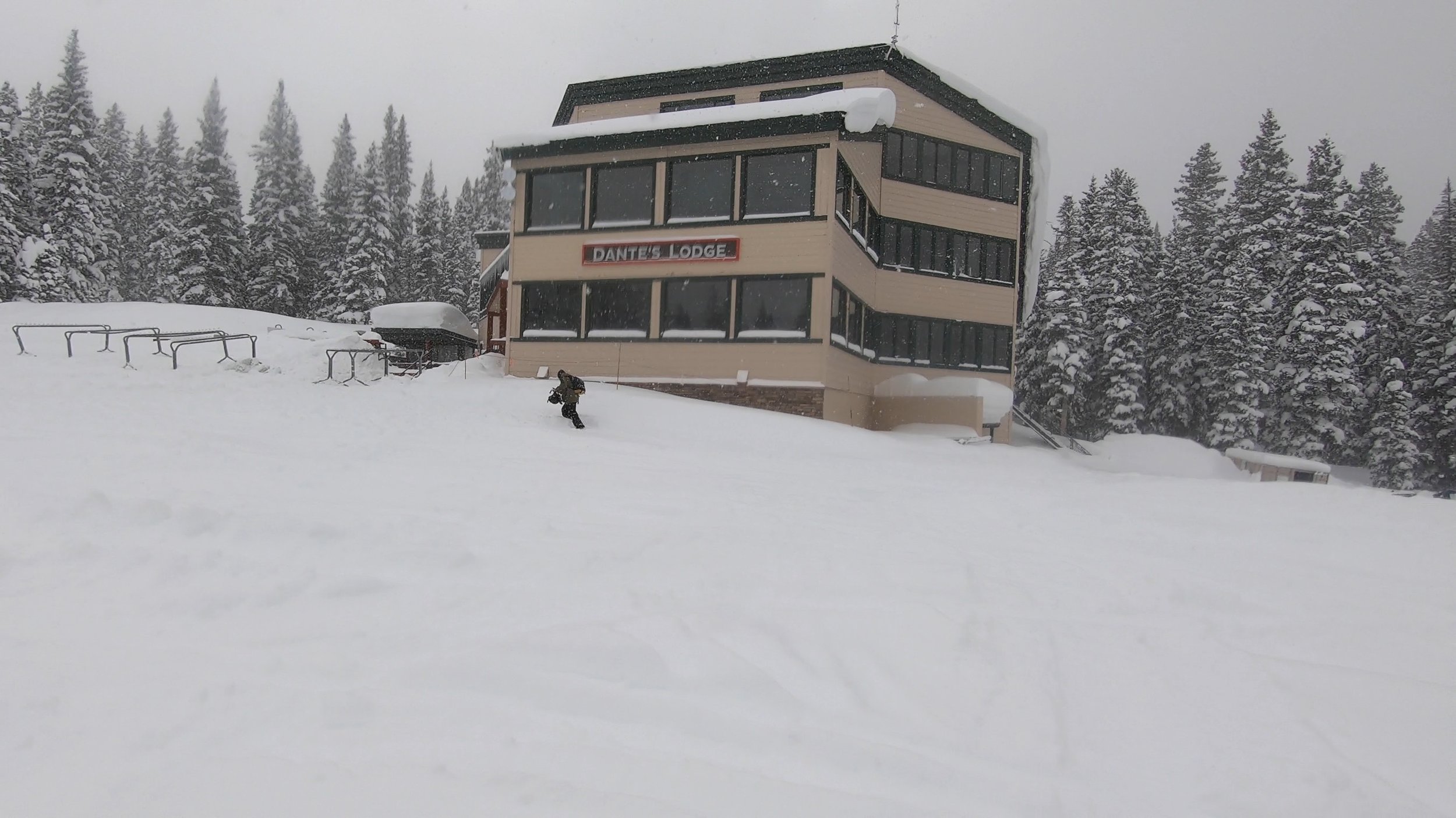Mountain Review: Purgatory
MOUNTAIN SCORE
CATEGORY BREAKDOWN
See our criteria8
Snow:
7
Resiliency:
6
Size:
6
Terrain Diversity:
6
Challenge:
7
Lifts:
8
Crowd Flow:
4
Facilities:
5
Navigation:
7
Mountain Aesthetic:
GOOD TO KNOW
1-Day Ticket: $39-$104
Pass Affiliation: Power Pass
On-site Lodging: Yes
Aprés-ski: Moderate
Nearest Cities: Durango (1 hr), Albuquerque (4 hrs), Denver (7 hrs)
Recommended Ability Level:
+ Pros
Striking, remote location
Family-friendly terrain
Limited crowds
Cozy base village
Free tickets for kids 12 and under
– Cons
Modest footprint
Lower snowfall than some other Colorado resorts
Some terrain zones difficult to find or reach
Poorly placed backside lodge
MOUNTAIN STATS
Lifts: 12
Trails: 105
Beginner: 22%
Intermediate: 35%
Advanced/Expert: 43%
Mountain Review
With a decently-sized footprint set amidst the majestic San Juan mountain range, Purgatory is a bit of a hidden gem within the Colorado ski scene. The resort has been through a few identity shifts in recent years—it was called Durango Mountain Resort for decades before returning to its original Purgatory name in 2015—but the local, character-laden feel has remained.
Not everyone will find the remote location worth the hassle of getting there, but Purgatory may offer the right vibe for those looking for a less-crowded alternative to the popular Colorado resorts.
While it doesn’t see the same accumulation totals as some competitors, Purgatory receives high-quality snow each season and preserves its snowpack well.
Snow Quality and Resiliency
Purgatory sits in southwest Colorado, hundreds of miles south of most Rockies competitors. However, the resort’s high elevation and dry climate afford it high-quality snow and strong preservation each winter. This makes for prime conditions when powder days roll around.
That being said, Purgatory doesn’t see quite the same quantity of snow as its northern competition. The resort holds its snow well once it gets it, but the lower average precipitation results in less-than-ideal early season conditions and slower-than-average terrain openings. In below-average snow years, the resort may see droughts that leave large swaths of terrain closed throughout the earlier months of the winter. Early-season snowmaking helps ensure a reliable opening date, but operations are limited, and it can take a few weeks for top-to-bottom skiing to open when natural conditions aren’t ideal.
TRAIL MAP
Ski and Snowboard Terrain
With a 1,600-acre skiable footprint and 2,000-foot vertical drop, Purgatory is a bit of a goldilocks in terms of its size—smaller than the massive Colorado destinations, but much bigger than most regional mountains on the East Coast. The resort sits entirely below treeline, meaning those hoping to visit Colorado to hit bowl terrain will want to look elsewhere. But in other regards, the resort boasts a diverse range of terrain for all abilities.
Purgatory effectively spans two faces: the front side, which rises up from the base village, and the back side, which technically offers a similar north-facing aspect to the front side but bottoms out at a huge basin and spans a much wider footprint.
Purgatory offers ample beginner terrain on its front side, but some of its green trails are too flat.
Beginner Slopes
Purgatory is a good, but not great, resort for beginners. On the plus side, the resort features green-level trails that span the full vertical drop of the resort, with options on both the front side and parts of the back side. This makes Purgatory a lot more beginner-accessible than many competitors. In addition, the resort features a dedicated learning area below the base village that provides an isolated environment for first timers.
However, the primary upper-mountain green trails involve flat sections that require catwalking and may not be enjoyable for less experienced guests, let alone anyone stuck on them. As a result, beginners may want to stick to the lower-mountain Twilight lift for more consistently-pitched green runs before progressing to harder runs.
Purgatory’s extensive intermediate footprint includes some awesome lightly-gladed cruisers.
Intermediate Slopes
Purgatory is a very strong resort for intermediate skiers and riders, with a multitude of trails to choose from off every lift. Guests may want to start on the frontside blues, which cruise down the main face of the mountain and offer excellent views of the village and surrounding mountains, before progressing to the Hermosa Park and Legends backside blues, which are slightly more narrow but offer more playful terrain lines and a handful of lightly-gladed areas. Most of Purgatory’s blue runs are consistently groomed, but a couple either contain ungroomed sections or may remain fully ungroomed, creating good environments to practice mogul terrain.
RECOMMENDED SKIS FOR PURGATORY
NOTE: We may receive a small affiliate commission if you click on the below links. All products listed below are unisex.
Recommended intermediate ski
Recommended advanced ski
Recommended high-alpine ski
Recommended powder ski
Advanced and Expert Slopes
Purgatory comes across as a family-oriented mountain at first, and the advanced and expert runs on its front side (save the expert-level trails down to the parking lot with no lift return access) aren’t that hard compared to most competing Colorado ski destinations. The single blacks on the main face of the mountain feel like harder blues at most Front Range resorts, while the double-black trails and glades are chiefly reminiscent of typical advanced-level runs.
However, Purgatory’s difficulty increases quite a bit once guests make it to the back side. The single-black trails off Lifts 5 and 8 are consistently steep and ungroomed, with fall lines and moguls that require significant endurance. While short, the double-black runs off these lifts boast the most technical terrain at Purgatory; runs like Elevator Shaft require tight turns and brief mandatory straightlining sections that mandate near-perfect skiing or riding precision. Those who have mastered the blacks and double-blacks on the front side should heed quite a bit of caution before jumping into similarly rated backside terrain.
While Purgatory generally leans family friendly, the back side hosts a few seriously steep pitches.
Terrain Parks
Purgatory offers a pretty decent terrain park for its size and stature. While it’s not exactly the biggest freestyle playground in the world, the resort offers three distinct parks with a range of features; these include the small-level Mini park, the medium Headwaters park, and the large Pitchfork park, which boasts a halfpipe when conditions allow. All of these parks are directly served by the Engineer chairlift, making them easy to lap.
Purgatory hosts three freestyle zones, including the medium Headwaters terrain park pictured here.
Lifts
Purgatory boasts a surprisingly modern setup for such an off-the-beaten path mountain. With the exception of the bunny hill and a handful of short backside trails, every part of the resort is serviced by high-speed lifts, including a six-pack on the front side and two detachable quads on the back. The resort also boasts a fleet of slower, fixed-grip helper lifts for when it gets busy or for more direct access to certain terrain pods.
However, Purgatory leans conservative in the operating schedule of certain lifts. Lift 5, which primarily serves as a helper double chairlift but provides access to a few dedicated advanced and expert runs, really only operates on peak weekends and holidays. Consequently, the trails exclusively served by this lift remain closed during other times. Similarly, the expert runs serviced by the backside rope tows also follow a correspondingly restricted schedule.
Purgatory’s combination of high-speed lifts and low crowds make it easy to get lots of laps in.
Crowds
Purgatory rarely sees serious crowds, giving the resort a unique combination of quick lift service and minimal queues that’s hard to come by elsewhere in Colorado—and allowing guests to get in more laps on peak weekends and holidays than essentially everywhere else in the state. However, Purgatory isn’t completely immune to crowds, and the resort does see modest waits at primary lifts during the December holiday and Texas spring break weeks. That said, barring some sort of mechanical issue, these queues almost never extend past 10 or 15 minutes.
Getting to and from certain terrain zones, especially on the back side, involves notable flat sections.
Ease of Navigation
Despite its modest size and strong crowd management, Purgatory isn’t always easy to get around. Starting and getting around the front side is pretty straightforward, but things start to get messy when making one’s way to the back side. First off, it’s not exactly clear how to get to these remote resort areas; while signs do exist, they’re not the most prominent in the world, making it easy to miss the proper trails and accidentally end up staying on the front side instead. And if you do end up on the right trails, they’re often flat and catwalky—the main run from the front side to Lifts 3 and 5 is literally called “Walk-a-Lot” (although there are some less flat alternatives if you know what you’re doing), while the Legends trail, which provides the primary access to Lift 8, maintains several flat sections as well.
It’s worth noting that Lift 8 is only directly accessible from the other backside chairs (Lifts 3 and 5), so to get there from the front side, one must endure two flat, unenjoyable runs in a row. Expert guests can cut off the Legends run early to hit some double-black runs, but they involve a rope tow or two to complete the journey to the Lift 8 base—and when these rope tows are closed, the corresponding runs are unavailable.
RECOMMENDED SNOWBOARDS FOR PURGATORY
NOTE: We may receive a small affiliate commission if you click on the below links. All products listed below are unisex.
Recommended intermediate board
Recommended advanced board
Recommended high-alpine board
Recommended powder board
Facilities
Purgatory’s southwest Colorado location affords it more moderate temperatures than most other Rockies destinations each winter. However, getting inside for a break can be somewhat of a hassle depending on where you are. Guests won’t have much trouble on the front side, where the mid-mountain Powderhouse Lodge provides grab-and-go dining and a sufficent amount of seating. However, the sole backside lodge is poorly placed logistically, sitting just slightly too far up to be accessible from Lift 3. As a result, guests must trek all the way to Lift 8—or endure a ride up the slow Lift 5, assuming it’s open—in order to get to this lodge. At least Lift 5 features a mid-way unloading station at the lodge, meaning those who ride it don’t have to travel all the way to the top.
Purgatory’s backside lodge offers ample space, but it can be infuriatingly difficult to get to.
Mountain Aesthetic
Despite its modest size and vertical drop, Purgatory’s incredible vistas stand out among Rockies ski resorts. The peaks surrounding Purgatory are nothing short of jaw-dropping, boasting jagged, vibrant facades that sit in stark contrast to the more subdued mountains of the Colorado Front Range. While Purgatory may not offer the same big mountain feel as its larger counterparts, its limited buildup and distinct natural features, especially on the back side, contribute to a unique, isolated feel. The resort is a leader when it comes to clear, sunny days, ensuring that guests can fully appreciate these awe-inspiring views even in the heart of winter.
Purgatory is surrounded by absolutely stunning peaks, with amazing backdrops complementing the slopes on clear days.
Altitude
One group of folks that may not fully appreciate Purgatory is those prone to elevation sickness. While the resort’s 10,822-foot summit sits lower than some competitors, Purgatory’s 8,800’ base elevation is among the highest in the country, meaning those not used to the altitude may find it difficult to exert energy. Visitors who haven’t spent time in this type of environment should be sure to heed caution when attempting anything risky.
Free Child Access
When it comes to family-friendliness, Purgatory offers a substantial advantage over its competitors: free lift tickets for kids 12 and under. While many Rockies destinations offer free tickets for young children, it’s rare to see complimentary tickets extend to children above early elementary school ages. For a weeklong family trip, this can mean ticket cost savings of hundreds of dollars.
Purgatory sits about 20 minutes from the town of Durango and just under an hour from the regional airport.
Getting There
Purgatory sits just under an hour from Durango-La Plata County Airport (DRO), a regional airport with direct flights from select Texas and southwest cities. This makes it fairly convenient to reach for those in Dallas, Houston, and Phoenix. However, there are no nonstop flights from any other out-of-state city. Purgatory runs a shuttle service to and from this airport, although it can be pricey, especially for smaller groups.
Purgatory is much further away from major international airports. The resort sits just over 4 hours from Albuquerque and a whopping 7 hours away from Denver, making it impractical to reach from these much larger hubs. Moreover, those who don’t live in the southwest may find it less of a hassle to visit other resorts.
Purgatory’s base village hosts several condo accommodations.
Lodging
Unlike many other modestly-sized Rockies ski resorts, Purgatory offers an extensive array of on-site lodging options. The ski-in/ski-out Purgatory Village hosts a number of on-site condo rentals, ranging from standard hotel rooms to luxury multi-room suites. Many of these accommodations come with access to pools, hot tubs, and fitness centers, in addition to the walkable base village.
For those looking for somewhat more affordable options, the town of Durango sits about 20 minutes south of the resort. Travelers will generally find upscale accommodations that offer better bang for their buck than the condos on-site. For truly budget-conscious visitors, a few bargain-basement inns exist as well.
Aprés-ski
Purgatory stands out more for its family friendliness than its nightlife, but the resort boasts a decent aprés environment after the slopes close. Purgatory Village hosts a handful of bars with sweet happy hour vibes, and downtown Durango is home to several walkable jaunts. If it’s not too crowded, visitors should also check out The Nugget, a unique roadside bar with regular live music and amazing food trucks.
While Purgatory doesn’t offer the most lively aprés environment, it can be a great place to enjoy happy hour with a tight-knit group.
Verdict
Purgatory’s modest size and so-so snowfall mean it’s no match for the best Colorado destinations, but the resort’s local feel, stunning vistas, and decent variety of terrain make it a strong regional choice for those in the southwest. The resort’s high-speed lifts, on-site lodging, and free access for kids under 12 make it a great option for families—while the tougher terrain on the back side won’t disappoint more tenured guests.
Pricing
Purgatory’s 1-day adult lift tickets are quite reasonable, topping out at just over $100—even at the window—making the resort a solid value for what you get. Tickets can be had for slight discounts with in-advance purchases. Purgatory is also a member of the Power Pass, and those skiing or riding 4 or more days may want to consider splurging for this product.









